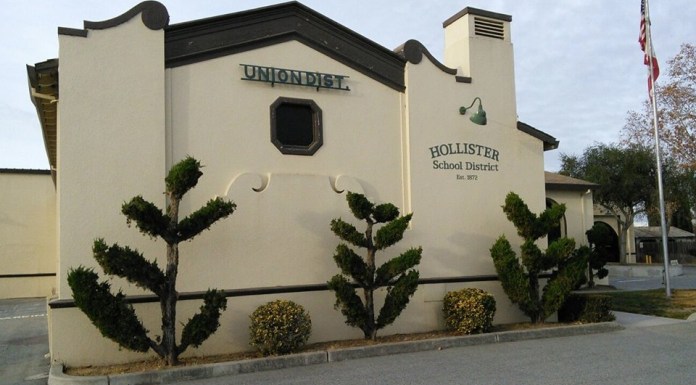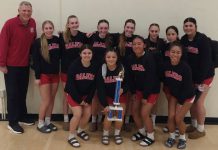Hollister School District board president Stephen Kain is not opposed to shifting from an at-large to a trustee area election system.
So when the local League of United Latin American Citizens brought the issue to the Hollister school board, citing the California Voting Rights Act and the need to ensure more minority representation on the board, Kain was open to the idea.
“The issue was brought up to the last board. As far as I know, they felt it wasn’t necessary to change. They wanted to continue doing things the way they were,” said the first-year board member who, along with Jan Grist and Carla Torres-Deluna, joined the governing body following the November 2018 election cycle.
“Since we’ve come on, it’s been presented to us by LULAC that we are the only political agency in Hollister that doesn’t use the district system,” Kain added.
Elected officials on the boards of San Benito High School District, San Benito County Office of Education, San Benito County Board of Supervisors and Gavilan Community College Joint District must reside within specific trustee area boundaries to qualify. Voters within each trustee area elect a single candidate at election time to represent that area.
That is not the case with the HSD board, which still uses an at-large system where trustees must live within the school district boundaries as a whole. Nearby Gilroy Unified School District conducts an at-large election as well. Residents can vote for candidates no matter where they reside within the district boundaries.
“Me personally, I don’t see what’s wrong with changing (our election format) when it’s appropriate,” Kain said. “I don’t think it’s right that we are the only political agency in the Hollister area not to have it.”
However, Kain is asking for patience. He explained that the district would take on a double cost if they draw the boundaries prior to the 2020 census and then be forced to redraw them in 2021 based on those numbers. It would cost an estimated $60,000 to $70,000 to hire a demographer to draw up the trustee area boundaries each time.
“If it has to be done right away, the district will incur that same expense in such a short period of time,” Kain said. “Being as fiscally responsible as we can, that’s my main concern.”

After every 10-year federal census, the school board must adjust trustee area boundaries based on population changes, according to a June 25 presentation on the California Voting Rights Act by Devon Lincoln from the Lozano Smith law firm.
The purpose of the CVRA is to “prevent racially polarized voting” by transitioning to “district-based elections.”
The current five-member board is comprised of three Caucasians (two men, one woman) and two Latinx women. According to the California Department of Education database, Hollister’s student enrollment is 80.6 percent Hispanic or Latino.
Under the existing model, the five trustees are elected at large in even-year elections and staggered terms. With a by-district election, each trustee must reside in a designated area to qualify for that office.
School districts and other municipalities have attempted to fight the CVRA on legal grounds. However, the CVRA is undefeated, and the defendants have been required to pay for all legal costs incurred by both sides.
A district must start the transition process within 45 days of receiving a demand letter to avoid CVRA litigation. Hollister School District has not received such a demand letter.
The school board took no action June 25, and Kain said he welcomes continued conversation on the issue.
To make the change, the board would first adopt an intent resolution to transition, which can specify what election year that will start in.
The board must then hold five public hearings to consider how to divide the district into five trustee areas (two pre-map hearings, two map consideration hearings and one map adoption hearing). The county Committee on School District Reorganization must hold at least one hearing and then vote on the local district’s proposal. Upon approval, the district can seek a waiver (which is generally granted) to bypass voter approval in an election.
Whether that change to the election cycle will come in time for the November 2020 or 2022 election is still yet to be determined but will be discussed at a future board meeting, according to Kain.










